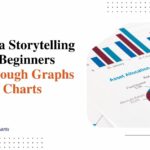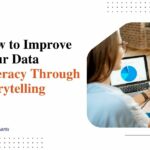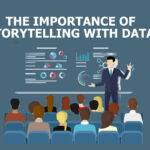How to Wow Your Audience with Data: Tips and Tricks for Using Hyperbole, Alliteration, and Imagery in Your Presentations

You’re about to showcase important data to an audience. Do you simply open PowerPoint and read bullet points verbatim? Or do you amplify key insights with strategic literary techniques? Savvy presenters know even compelling data needs artful delivery to truly captivate listeners.
Let’s explore methods to make your data presentations POP. We’ll look at how hyperbole, alliteration, vivid imagery, and other expressive devices can help you highlight critical insights and engage audiences more memorably.
Pump Up Your Points with Hyperbole
Hyperbole refers to intentional exaggeration for emphasis. Sprinkling judicious hyperbole throughout a presentation can help drive home important ideas. For example, if profits skyrocketed last quarter, describe them metaphorically as “shooting to the moon.” Purposeful overstatement makes key points more prominent and memorable.
Use Alliteration to Aid Retention
Alliteration repeats the same letter or sound in closely connected words. For example, “Q3 quick quoting quota quadruple.” When presenting data trends, try framing them with alliterative phrases. The lyrical language sticks better in the audience’s mind, aiding information retention.
Wield Vivid Imagery and Metaphor
Paint pictures in the listener’s mind using figurative language that activates visual and sensory cortices. For instance, compare website traffic surging to a tsunami wave crashing over a digital shoreline. Metaphorical imagery makes data feel tangible and concrete rather than abstract.
Tell Compelling Data Stories
Structure your presentation narratively with protagonists, obstacles, rising action, and resolutions. Perhaps personify your company as a hero overcoming challenges on a quest for market share. Build tension and anticipation around key revelations. Stories engage audiences emotionally in ways raw data alone cannot.
Use Strategic Contrasts
Spotlight outliers and trends by contrasting them against more expected comparables. For example, visualizing regional sales against industry averages instantly reveals over/under-performance. Contrasting directs focus and highlights significance.
Speak Conversationally
Use natural speech patterns, not stiff jargon. Incorporate rhetorical questions, humor, and casual asides to engage listeners conversationally. Make your data presentation sound more like an animated chat than a lecture. Approachable language fosters connection.
Share Specific Examples
Back up statements with concrete metrics, case studies, and real-world impacts. For instance, rather than just claiming “growth”, quantify it in new customers added, facilities expanded, etc. Vivid specifics stick better than vague generalities. Make it tangible.
Guide Audience Perspective
Use inclusive phrases like “we” and “us” to position listeners as active participants in the narrative, not just detached observers. Speak directly to the audience in second-person voice for greater immediacy. Craft viewpoints that emotionally draw listeners into your data story.
Repeat Key Points
Reinforce critical insights by circling back and restating them multiple times using different phrasing. Repetition aids retention, especially when paired with alliterative language. Echo important points so they resonate.
Maintain Conceptual Consistency
Frame key data relationships using consistent metaphors and motifs. For instance, if comparing your company to a plane, frequently refer back to its trajectory, turbulence, destination, etc. Familiar touchpoints help audiences quickly grasp complex ideas.
Add Expressive Description
Statistics alone seem dry. Use vivid adjectives, active verbs, and figurative language to add color. Describe data with tone, texture, and movement that pops. The expressive style keeps audiences engaged and makes concepts memorable.
Provide Connective Tissue
Don’t just deliver disjointed data points. Provide connective tissue explaining how points interrelate and build sequentially to tell a bigger story. Guide listeners smoothly through disparate details to grasp the unified narrative.
Next presentation, amplify your core insights with hyperbole, alliteration, imagery, contrasts, examples, repetition, consistency, and expressive language. The artful technique transforms data from forgettable facts into an unforgettable story. Let’s make your next data download a dramatic experience!







